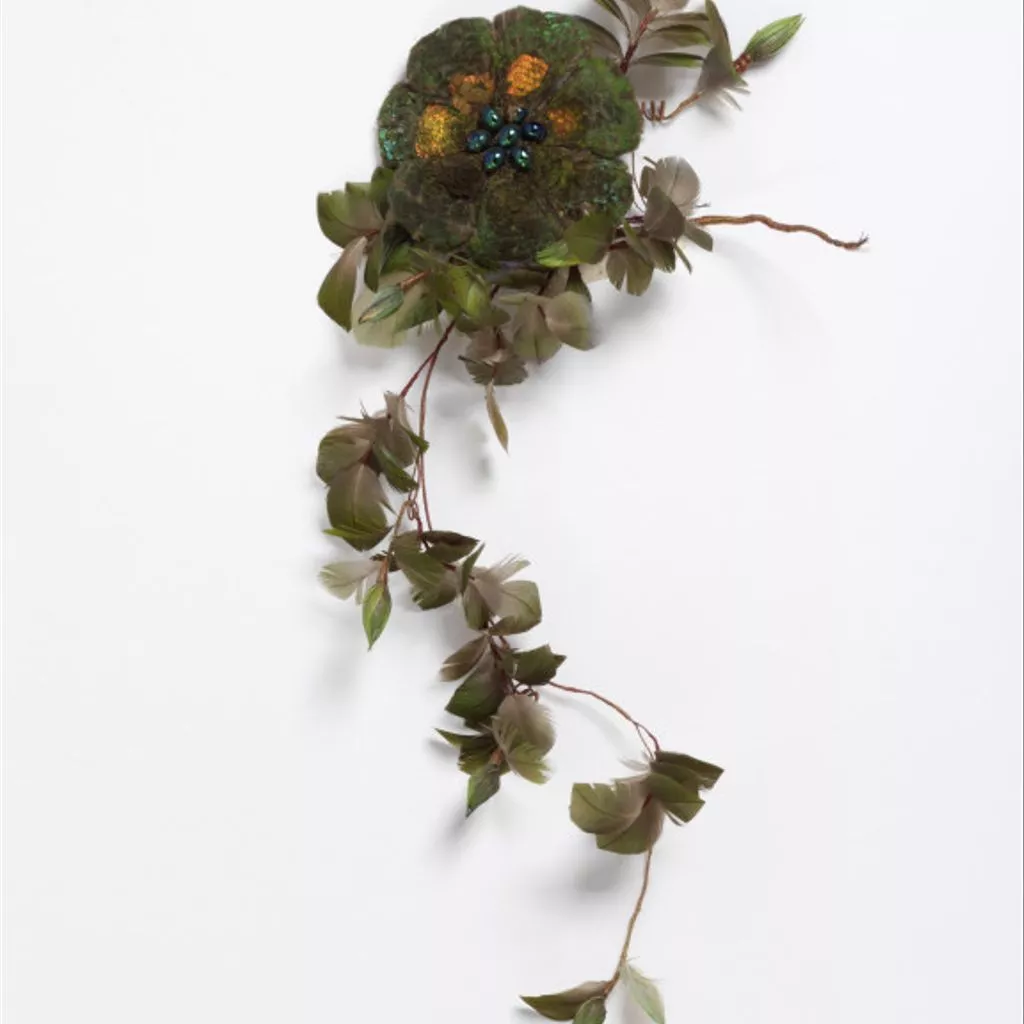Description
Millinery wire covered with brown silk thread and decorated with humming bird feathers and beetle wing arranged in the form of a floral spray. Individual feathers form leaves and 7 pieces of hummingbird skin, cut in the shape of the petal with the iridescent copper form a blossom, with 7 pieces of beetle-wing in the centre.
Flower spray decoration intended for a hat, feathers of hummingbird (possibly Topaza pella) and green parrot (probably Pionus maximiliani), jewel beetles (Buprestidae), silk and wire, 1870-1890, probably made in Rio de Janeiro, Brazil
A shimmering spray of feathers forms this decoration intended for a hat and exemplifies early concerns about the conservation of wildlife. From the 1880s to 1921, the most fashionable women's hats were decorated with the plumage of exotic birds. This spray is made of feathers from a Hummingbird (possibly Topaza pella) and green parrot (probably Pionus maximiliani). Not only have individual feathers from this iridescent bird been used as 'leaves' on the spray, but the whole skin of the bird's head to form the 'blossom'. This would have required killing the hummingbird.
The Society for the Protection of Birds was formed in 1889 in protest at the killing of Britain's great-crested grebe for use in fashionable dress. By the early 20th century, the Society was campaigning against the use of more exotic birds in millinery. The first Anti-Plumage Bill was defeated in the House of Commons in 1908 and finally passed in 1921, preventing any further use of birds as fashionable decoration.




